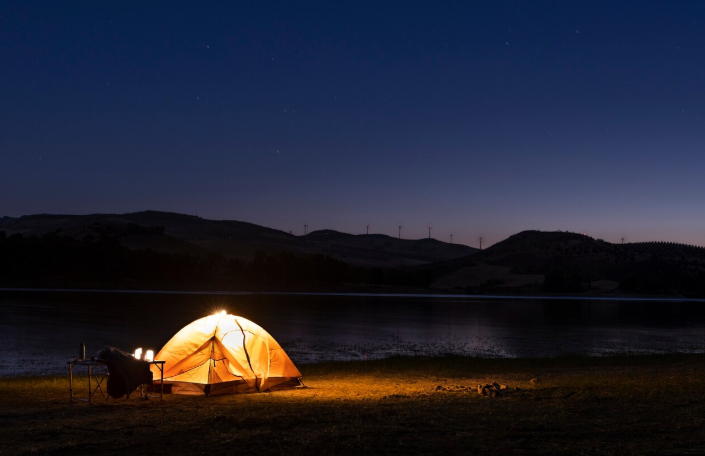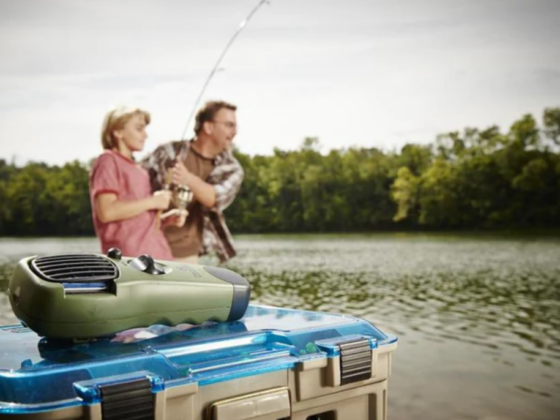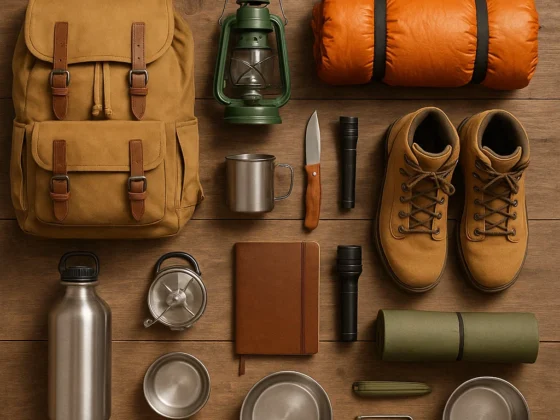There’s something incredibly rewarding about being out in nature for days at a time. The stillness of the early morning mist, the soft crackling of the campfire, and the sense of self-reliance that comes from roughing it in the wild. But let’s be honest—no matter how much we appreciate disconnecting from our screens, we still rely on a bit of tech to enhance our camping trips. Phones for maps and emergency calls. Headlamps and lanterns. GPS devices, drones, action cameras, and portable coolers. And all of these need power.
This is where portable energy solutions become vital for modern campers, especially during extended stays in the wilderness. Whether you’re off the grid for a weekend or a full week, running out of power is a frustrating and potentially risky situation. Fortunately, today’s portable power options are designed to be lightweight, efficient, and powerful enough to keep all your gear running smoothly. Here’s how you can make sure your next camping trip is as worry-free as possible when it comes to keeping the power flowing.
The New Essentials: Why Power Matters in the Wild
Gone are the days when a flashlight and a few spare batteries were enough. Modern campers often carry a mix of digital and electronic gear. A weekend trip might include a DSLR camera to capture the landscape, a Bluetooth speaker for tunes by the fire, rechargeable fans, or a laptop to review footage or jot down journal entries.
Add to that the necessity of safety devices like satellite communicators and weather radios, and it becomes clear that power is not a luxury—it’s a requirement.
Even families camping in developed campgrounds find that they need portable energy for everything from charging tablets for the kids to powering string lights for ambiance. And for backcountry hikers who spend several nights under the stars with no plug in sight, reliable power sources are an absolute must.
Understanding Your Power Needs
Before you choose a power solution, it helps to calculate your average daily power consumption. Start by listing the devices you plan to bring along, their battery capacities (usually measured in mAh or Wh), and how often they’ll need recharging. Multiply the estimated usage by the number of days you’ll be off-grid, and you’ll have a rough estimate of the total power you’ll need.
Let’s say you’re bringing a smartphone (3000mAh), a headlamp (2000mAh), and a portable fan (4000mAh), and each needs a full charge daily. That’s a minimum of 9000mAh per day. Over a four-day trip, you’d need at least 36,000mAh or about 130Wh to keep those devices running.
Now add a margin of safety—about 20 to 30 percent extra—for unexpected usage or inefficiencies in charging. This will help you choose a power bank or generator that matches your needs without coming up short on day three.
Small but Mighty: High-Capacity Power Banks
Power banks have evolved significantly over the past few years. Today’s models are more compact and powerful, making them ideal for serious campers who want maximum energy in a portable form.
A great example of this is the Nitecore power bank. Known for its high efficiency and rugged build, this power solution offers an ideal balance between portability and performance. Whether you’re topping up your phone or running a small light for the night, this kind of power bank delivers dependable results.
What makes a Nitecore power bank stand out is its thoughtful design. Most models are water-resistant, impact-resistant, and lightweight—some weighing less than a smartphone. They often feature USB-A and USB-C outputs, supporting fast charging for multiple devices at once. With capacities ranging from 10,000mAh to 20,000mAh or more, these units pack serious punch in a size that fits comfortably into any backpack.
Solar Charging: Nature’s Power Source
When you’re spending multiple days outdoors, a high-capacity power bank may not be enough. That’s where solar panels come in. Foldable, lightweight solar chargers are designed for backpacking and base camping, offering an eco-friendly way to recharge during daylight hours.
Pairing a solar charger with a power bank is a smart strategy. During the day, use solar panels to top up your power bank while you hike or relax at camp. At night, rely on the stored energy to recharge your gear.
Keep in mind that solar efficiency depends heavily on weather conditions. Cloudy or rainy days may reduce the amount of energy your panels can collect. That’s why it’s important to use solar as a supplement rather than a sole power source—unless you’re in consistently sunny areas or are camping during the dry season.
Portable Power Stations: For Bigger Energy Demands
If your camping setup includes multiple people, power-hungry devices, or even small appliances, consider investing in a portable power station. These are basically large-capacity batteries, sometimes referred to as “solar generators,” though they don’t generate power without panels.
Power stations typically offer AC outlets along with USB and DC ports, allowing you to power devices like laptops, mini-fridges, air pumps, or even a small projector for movie night at camp.
They range in capacity from 150Wh up to 2000Wh or more. While they’re heavier and bulkier than power banks, models with handles and wheels are easy to transport from your car to your tent or table.
Brands like Jackery, EcoFlow, and Goal Zero dominate this space, but even here, attention to features like recharge time, inverter efficiency, and number of cycles (battery lifespan) can help you get the most out of your investment.
Charging Tips and Battery Care
To make the most out of your portable power setup, keep these tips in mind:
-
Charge before you go: Make sure every device, power bank, and station is fully charged before you leave home.
-
Use energy-efficient devices: LED lanterns, low-power fans, and battery-optimized phones stretch your power supply further.
-
Recharge strategically: When using solar, charge during peak sunlight (usually between 10 AM and 2 PM).
-
Keep batteries shaded: Avoid overheating. Place your power banks and stations in a shaded area when not in use.
-
Bring spare cables: Damaged or forgotten charging cords can render even the best power station useless.
A Word on Safety
As with any electronics, safety matters. Always follow manufacturer guidelines for charging and storage. Don’t expose your power bank or station to water unless it’s specifically rated for it. Avoid overcharging or using damaged cords, and keep power equipment away from direct fire or extreme heat.
For those with kids or pets, store larger batteries and cords in a safe, dry location at your campsite.
Choosing What’s Right for You
Not every camper needs a 1000Wh power station. If you’re car camping with minimal gear for two nights, a quality 20,000mAh Nitecore power bank may be all you need. But if you’re venturing off the grid for five days with a group and multiple devices, a mix of a portable station and solar charger is the more comfortable route.
Balance your needs with portability, weight, and cost. The most expensive setup isn’t always the best. It’s about matching the gear to your trip, your habits, and the level of convenience you want.
Final Thoughts: Power Equals Freedom
There’s nothing quite like knowing you’re completely self-reliant in the outdoors. With the right energy solutions, you don’t have to cut your trip short or worry about your phone dying in the middle of nowhere. Whether it’s a reliable Nitecore power bank for quick charges or a solar-assisted power station for a full campsite setup, portable power gives you the freedom to roam longer, safer, and with more peace of mind.
Next time you’re packing for the great outdoors, don’t just think about tents, food, and water. Think power. Because once you experience a trip where everything runs exactly as it should—even off the grid—you’ll never camp the same way again.



